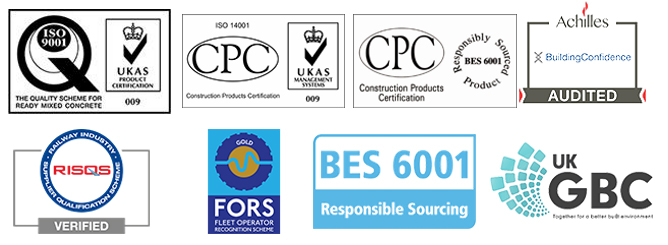Heidelberg Materials EasyFound®
Durable concrete for foundations
Heidelberg Materials EasyFound® contains a carefully balanced mix of cement, sand and aggregate to produce the most durable concrete solution for your foundations.
Where to use it
- House foundations
- Domestic garage foundations
- Conservatory foundations
- Garden wall foundations
The benefits
- Versatile and durable concrete
- Formulated for ease of placement
- Load bearing
- Quality-assured
- Complies with British and European Standards
Laying EasyFound®
Tools you may need:
- Spade
- Wheelbarrow
- Hammer
- Shovel
- Measuring tape
- Spirit level
Damp-proofing
- Use a sheet of polythene that’s more than 0.010″ thick – usually called 1,000 gauge.
- Spread it over the sand, turning the edges up at the wall to form a tray.
- If there are joints, overlap them well and secure them with waterproof tape. If you require watertight concrete or jointing materials, contact your local sales office.
Laying the concrete
- Firmly pack the concrete down with a piece of timber and finish it level with the chalk line. Be sure to check the overall surface with a spirit level and straight edge and fill in any hollows.
- If a screed is to be applied, wait until the concrete has set firmly enough to support a plank to walk on, then brush the surface with a stiff broom to prepare it for receiving the screed.
Leave it to cure for about three days under a sheet of polythene to prevent shrinkage cracks, which occur when concrete dries too quickly.
For more information on recommended thicknesses, download the brochure.
Using the right foundations
If ground conditions are good, foundations for low-rise buildings and garden walls are often strips of concrete in a straight-sided trench, also known as strip footings.
It’s important to gain professional advice before deciding if strip footings are suitable for your project. In any case, stringent building regulations govern the size of footings for most walls and the advice of your local building control department should be obtained. They can also advise if precautions are needed against aggressive ground conditions.
Preparing the ground
As a general rule, footings should be in good, firm ground, which is well drained. It’s not a good idea to lay foundations on ground recently filled or re-graded. Avoid any tree roots and drains.
- Dig the trench deeper than the footing itself, so that the first one or two courses of brick are below ground level. If the soil is not sufficiently firm when you reach the required depth (check by pressing your heel into it, which should not make a deep impression), dig deeper until good, firm ground is reached. If the trench starts to fill with water as you dig, seek professional advice.
- Keep the sides of the trench vertical and check the bottom is level using a long, straight piece of wood and a spirit level.
- Knock a wooden peg into the bottom of the trench near one end, until the top of the peg represents the depth of the footing. Place more pegs along the trench at regular intervals, making sure the tops are level.
- Cut back any tree roots which intrude into the work area
Sloping sites
When the ground slopes, make the footing level by introducing one or more steps. Make the steps equal to multiples of brick thickness, allowing for the mortar as well. Make the steps by placing securely anchored shuttering across the trench.
Filling the trench
Pour the concrete into the trench, then firmly pack it down with a piece of timber until it’s exactly level with the top of the pegs.
Leave the pegs in place, covering them with polythene and allow the concrete to cure/harden before building the wall. In cold weather, provide frost protection.
We can also supply a cost-effective flowing material for trench fill should you need it. This discharges from one position, is energy and time saving, self-levelling and needs no packing down. Please ask your local customer service office for further details.
Accreditations
Heidelberg Materials is a member of the Quality Scheme for Ready-mixed Concrete (QSRMC) and all our products carry this certification.

